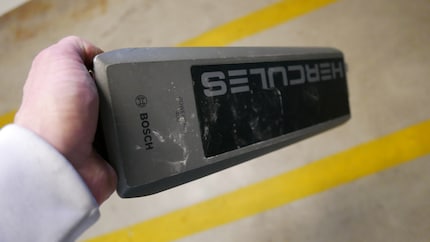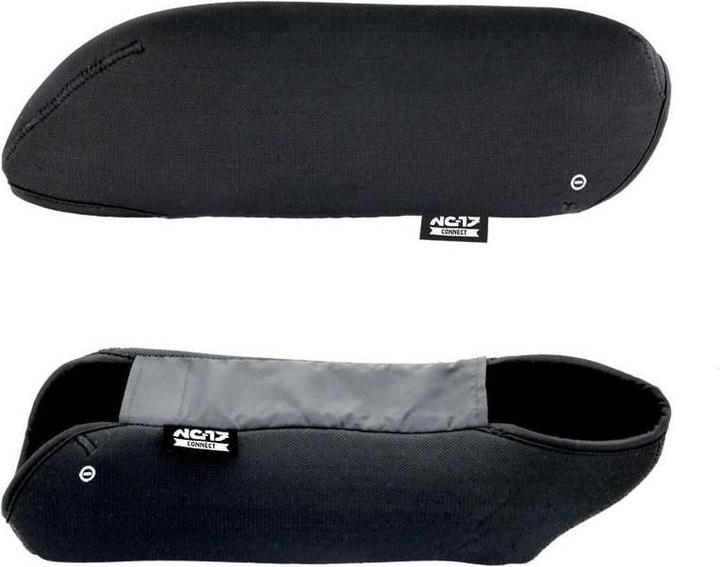

How to make your e-bike battery last longer
E-bikes are workhorses that make everyday life easier for many of us. Unless the battery dies. With a little care, you can extend the life of this expensive part.
"Forgot the battery!" Just as regularly as butler James trips over the tiger skin in "Dinner for one", the front door at home flies open early in the morning. Mrs R storms in, plucks the charging cable from the Bosch PowerPack and rushes back into the garage where her long-suffering e-bike is parked. I just shake my head and see what I can do for the battered vehicle from time to time. Bleed the brakes, change the pads, clean the chain and treat it with all-weather spray. Things like that. And pumping, of course. Flat tyres not only increase the risk of punctures, but also the rolling resistance. It's the little things that cause the battery more trouble than necessary. After over 14,000 kilometres of mountainous city driving in all weathers, "ours" is slowly showing the first signs of ageing. The range is decreasing and a new one is expensive.

Luckily, the old one is far from over. If you pay attention to a few things, you can delay the death of your battery
Forget the memory effect
The memory effect caused problems for earlier batteries, as they could not cope with frequent partial discharges. This is why the opinion persists that the battery should only be recharged when it is almost completely empty. With lithium-ion batteries, which are installed in practically all current e-bikes, this problem no longer exists. You can connect them to the charger at any time and it doesn't matter if you only "top up" for a few minutes. If you don't use the battery for a long time, you should store it in a medium state of charge. If it is barely or fully charged, this puts unnecessary strain on the cells and reduces the service life. The recommendations vary from 30 to 60 per cent to 50 to 80 per cent. The exact value does not matter. With a very low self-discharge of around one per cent per month, your battery will easily survive a "hibernation" and will be ready for use again immediately afterwards.
Don't let the term "charging cycle" fool you
How far can I get with it? How many times can I charge the battery before it gives up the ghost? When it comes to the durability of battery cells, the term "charge cycle" is often used. It describes how often the battery can be discharged and fully charged again. If you only charge the battery half full, you have only used half a charge cycle. A current lithium-ion battery can withstand around 1000 charging cycles. So if you only manage an average of 40 kilometres, you can cycle around the world once. How far it actually carries you in the end depends on many different factors. Weight, speed, environment, tyre pressure, temperature, cadence, ... the list could go on and on. With the range assistant from Bosch, you can get a feel for how they affect the distance you can cover.

Charge and store at room temperature
The tangle of cables in the home annoys me, but the battery benefits from the room climate. As the temperature drops, its performance decreases as the electrical resistance increases. Cold cellars are therefore not for it, just as heat can be a battery killer. Avoid extremes whenever possible. If you mean well with your battery, charge and store it in a dry environment and at temperatures between 10 and 20 degrees. If you have no other option and your battery and bike spend a lot of time riding or standing in the cold, you can at least give it a protective cover.
Fingers off the pressure washer
You don't have to do much to keep your battery and the associated electronic components clean. In fact, a little less is better than too much. You can clean it with a damp cloth and apply a little grease to the contacts. If you want to clean the rest of the bike, remove the battery first and leave the pressure washer in the basement. Instead, use a low-pressure cleaner and don't use it on the bearings and contacts. You can do without water altogether with a special e-bike-cleaner, which can be wiped dry.

A "good" ride for the battery
As in a car, you can save energy as long as you drive with foresight and don't unnecessarily overtax the motor unit.
- Watch your cadence. If you are lazy about shifting gears, you are shifting a lot of work onto the motor. This is detrimental to your battery. From 50 revolutions per minute upwards, the motor can support you most efficiently.
- Avoid unnecessary weight. Before purchasing a new e-bike or battery, you should also ask yourself what range you actually need. If you only cover short distances, a smaller battery with a lower capacity will suffice.
- Inflate your tyres to the maximum permissible tyre pressure and check them regularly if you want to get as far as possible on one battery charge
The battery management
The battery management system (BMS) protects the battery from excessive operating temperatures, overcharging and deep discharging. You only notice its workings when your display spits out an error message. It actively helps to ensure that your battery lasts a long time and harmonises with the drive. For this reason, it is not necessarily a good idea to buy a cheap no-name battery or a charger from a third-party manufacturer as a spare part. In the best case, everything works. If things go wrong, nothing works at all. If you pay attention to the points mentioned here, you shouldn't need a replacement so quickly anyway.
Simple writer and dad of two who likes to be on the move, wading through everyday family life. Juggling several balls, I'll occasionally drop one. It could be a ball, or a remark. Or both.
Practical solutions for everyday problems with technology, household hacks and much more.
Show all


